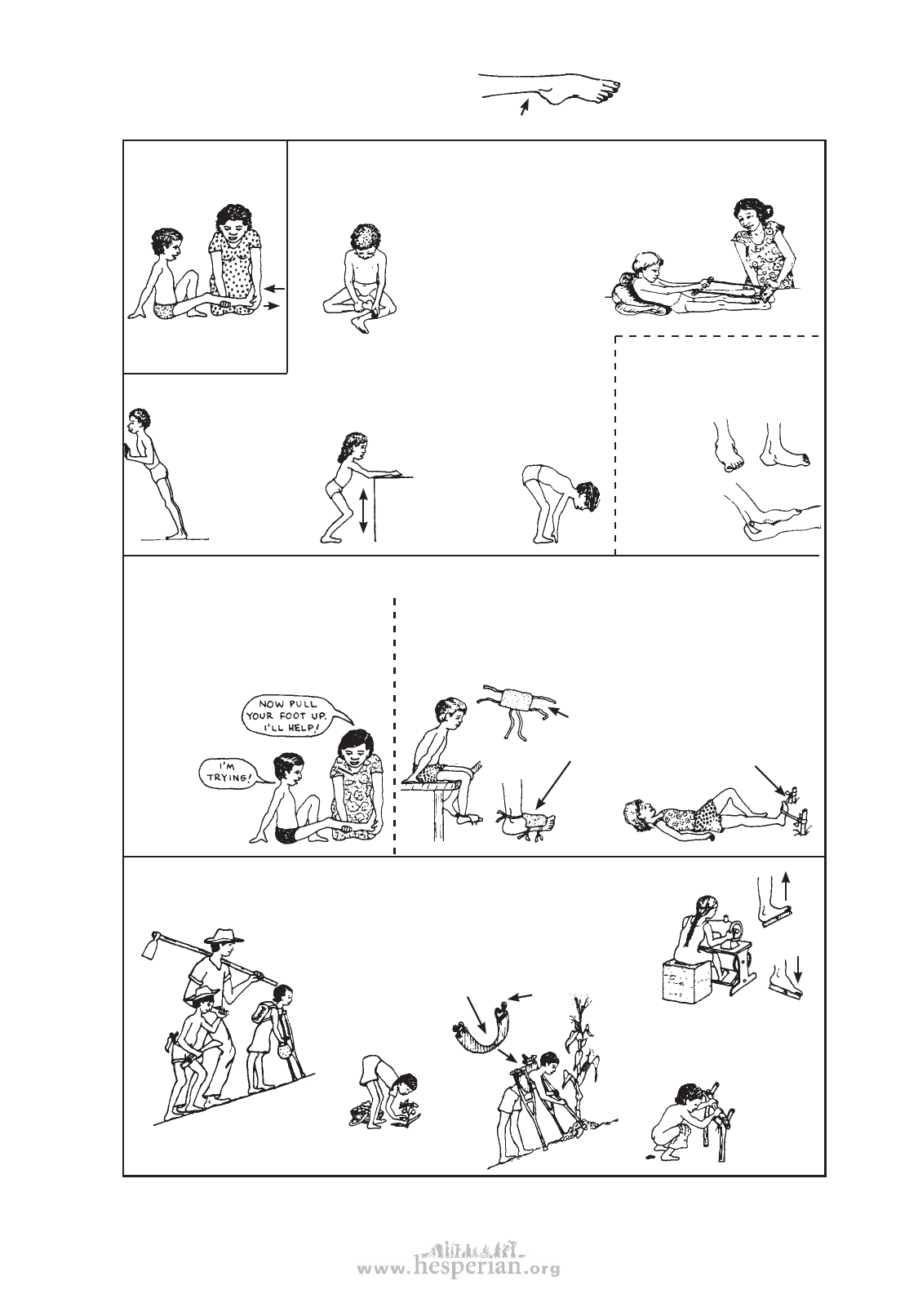
FOUR WAYS TO DO EXERCISES THAT
STRETCH A TIGHT HEEL CORD
chapter 8 83
1. Someone else
moves the limb.
2. The child does his own exercises, but without using the
muscles in the affected part.
(This may help
to prevent a
contracture
but will not
help much to
correct it.)
Here the child does
his own stretching with
some help from his mother.
Often necessary—
but not much fun.
Keep
heels
down.
Leaning
against
a wall
stretches
the feet
more than
standing
upright
does.
If the child is
strong enough,
bending the knees
or touching the
toes is a good
way to stretch
the muscles that
cause a tight
heel cord.
CAUTION: When doing these
exercises, carefully check
to see that the foot is not
dislocating to the side.
If so, you
should use
Method 1,
being careful
to hold the
foot in such
a way that it
does not ‘cave
in’ to the side.
3. The child does the exercise—using muscles of the affected part.
WITH ASSISTANCE:
If the child has some strength to raise his
foot, have him raise it as far as he can.
Then help him to raise it as far as it will
stretch.
AGAINST RESISTANCE:
If the child has enough strength to raise his foot against
resistance, he should do so. But be sure that the foot comes
all the way up.
Developing
the muscles
that lift
the foot
may help
prevent
contracture.
sand
bag
tied to
foot
piece of old
car or bicycle
tire inner tube
4. The child does the exercise—during normal daily activities.
Figure out ways or aids so that the child can take
part in ordinary activities that stretch muscles
and prevent contractures.
chest band that
hooks over
crutch top
strong
wire
standing and walking uphill
to stretch heel cords
picking
vegetables
Sewing on a machine can
exercise foot and combat
contractures.
bar that
permits
child to
squat and
bend ankles
disabled village children